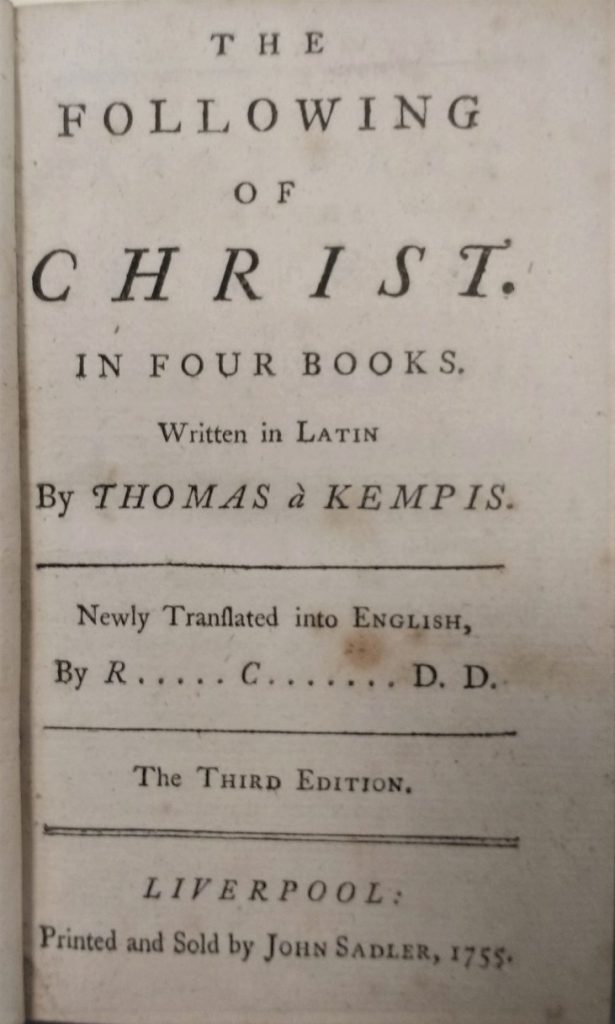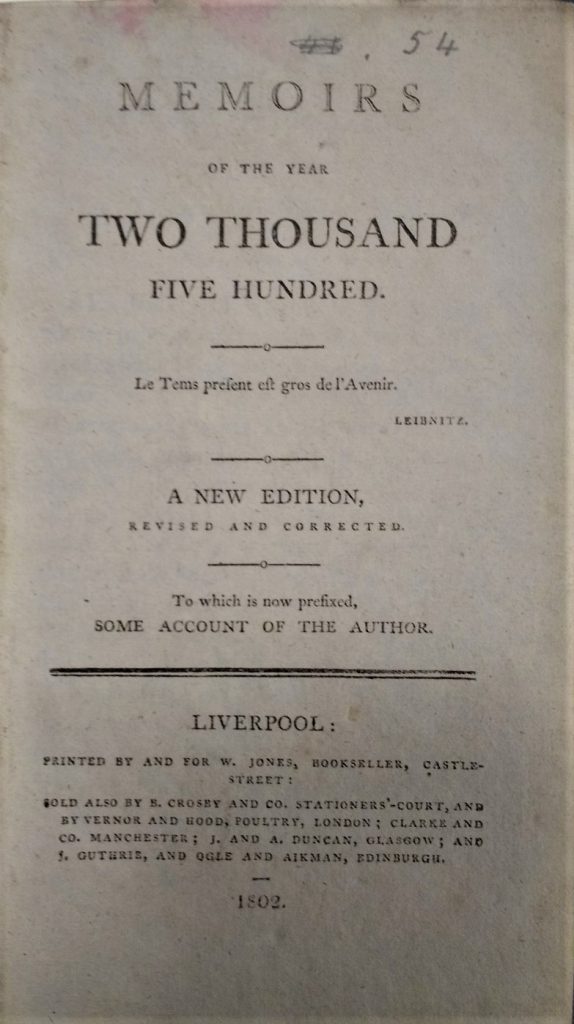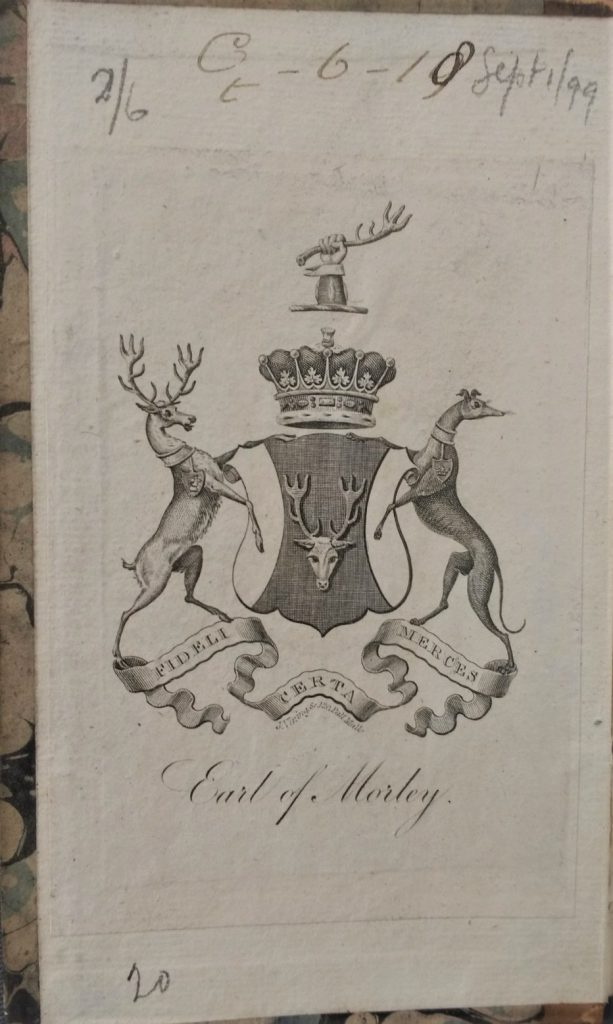
The following of Christ is an English translation of Imitatio Christi, a work traditionally attributed to the German canon Thomas à Kempis (c. 1380–1471). Written around 1420, it became one of the most widely read and frequently translated of Christian devotional works.
This edition was printed and sold by John Sadler of Harrington Street, Liverpool, in 1755. Sadler was primarily an engraver and printer for the pottery trade, but he also produced a number of Catholic devotional books.
This book marks a landmark for Special Collections, as it was our 10,000th item reported to the English Short-Title Catalogue! According to ESTC it is one of only two known copies of the 1755 edition in Britain, with two more copies reported in the United States.

Our second new accession is another translation, and another Liverpool publication. Printed in 1802 by William Jones – a bookseller, printer, publisher, stationer and “seller of patent medicines” based on Castle Street – Memoirs of the year two thousand five hundred is an English translation of the French work, L’an 2440: rêve s’il en fut jamais, by French dramatist and writer Louis-Sébastien Mercier. Originally published in 1770, the novel is set in 2440 (or in the English edition, “for the sake of a round number” 2500), presenting a future France based on Enlightenment political theories. It was one of the very first novels to present a utopian vision of the future, and was especially pioneering in choosing a real place in which to set it – namely Paris. The novel was immediately banned in France and condemned as blasphemous in Madrid, where distribution was subject to a fine and six year prison sentence. Despite this, it is thought to have had an important influence on subsequent French and English speculations about the future.
Finally, we have two books containing volumes 1 and volumes 4-6 of William Combe’s The r[oya]l register. Combe was a prolific writer, best known for his Doctor Syntax series. Published between 1778 and 1784, this register contains often lengthy descriptions of the activities of aristocrats and other notables of the period. Written in the distinctive writing style of the author, the tone has been described by one bookseller as “somewhere between ‘Hello’ magazine and ‘Private Eye'”.
Volume one contains the bookplate of the Earl of Morley:

Bibliography:
Alkon, Paul K, Origins of futuristic fiction, (Athens, GA: University of Georgia Press, 1987)
Liverpool Bibliographical Society, The book trade in Liverpool to 1805: a directory, (Liverpool: Liverpool Bibliographical Society, 1981)
Stableford, Brian M., The plurality of imaginary worlds: the evolution of the French roman scientifique, (Encino, CA: Black Coat Press, 2016)